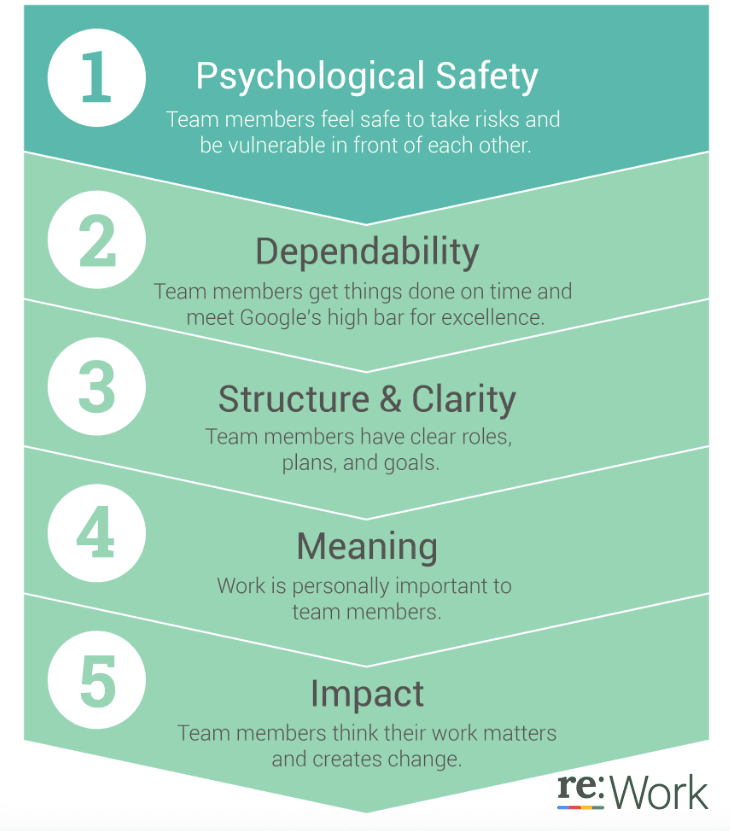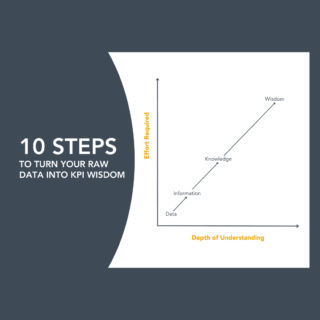Clients and PuMP® Blueprint workshop participants often ask “who should be on our strategic planning team? Measures team? Objectives team?
We often feel confident that if we find the perfect mix of individual traits and skills necessary, we’ll have a stellar PuMP® Measures team – take a stats whiz, someone who loves data, the manager of the goal, a couple extroverts, someone with an MBA and Dream Team assembled, right?
But what Google discovered when they conducted research into what makes a team effective at Google proves this assumption dead wrong. Who is on a team matters less than how the team members interact, structure their work, and view their contributions!
Google learned that there are five key dynamics that set successful teams apart from other teams at Google:
- Psychological safety: Can we take risks on this team without feeling insecure or embarrassed?
- Dependability: Can we count on each other to do high-quality work on time?
- Structure & clarity: Are goals, roles, and execution plans on our team clear?
- Meaning of work: Are we working on something that is personally important for each of us?
- Impact of work: Do we fundamentally believe that the work we’re doing matters?

Of the five key dynamics of effective teams that the researchers identified, psychological safety was by far the most important.
Organizational behavioral scientist Amy Edmondson of Harvard first introduced the construct of “team psychological safety” and defined it as “a shared belief held by members of a team that the team is safe for interpersonal risk-taking.”
You may think that taking a risk with other team members may sound easy, but in my ten years of consulting I have witnessed that many people would rather move ahead without being clear on a goal in order to avoid being judged or feeling less than perfect on the team.
And what Angela King added in our live sessions was that those teams who have both low psychological safety and low clarity and structure struggle with change.
What does this mean for your PuMP® Blueprint Measures Team?
For those of you who create PuMP® Measures Teams, you know how critical it is for people to feel comfortable challenging the status quo. The PuMP® Blueprint and each tool in the step-by-step process should give you the clarity and the structure you need; but to feel comfortable overcoming your old habits and replacing them with the new PuMP® techniques, the team must have a high degree of psychological safety.
So when building your Measures Team now, your question should be different than before when you asked the question, Who should be on the team? You now need to ask, How do we improve the way team members interact throughout the PuMP® Blueprint’s 8-steps?
Who should be on the team?
You still need to think about the skills and traits you want on the team: someone comfortable with math and statistics, someone who understands data sourcing for the goal you are working on, a manager of the goal and a few other people who really care about achieving the goal.
Also, while assembling the people, consider these three simple questions that improve a team’s psychological safety (Edmonson discusses them in more detail in her TEDx talk):
- Is the potential team member able to frame the work as a learning problem, not an execution or measurement problem?
- Can they acknowledge their own fallibility (that neither the work, nor the outcome will be perfect, but that they are willing to try)?
- Do they love asking lots of questions instead of telling people what to do? Can they model curiosity?
Once you have formed the team, you can now assess the team’s level of psychological safety. Edmondson suggests asking team members how strongly they agreed or disagreed with these seven statements (and I suggest getting your team members to rate their agreement on a scale of 1-10 confidentially and individually):
Assessment Statements:
- If you make a mistake on this team, it is often held against you.
- Members of this team are able to bring up problems and tough issues.
- People on this team sometimes reject others for being different.
- It is safe to take a risk on this team.
- It is difficult to ask other members of this team for help.
- No one on this team would deliberately act in a way that undermines my efforts.
- Working with members of this team, my unique skills and talents are valued and utilized.
However, what Angela also shared was, the less dependable the team is when it begins, the more clarity and structure they likely need. Make sure you focus your team on understanding the Why of each tool we provide in each PuMP® step. Ensure they take the time needed in each new step to understand the tool and how it works before they rush into using it on their new goal.
Want to know more about Google’s research on effective teams? Here are two direct links on Google’s re: work site:
The PuMP® Performance Measure Blueprint was created by Australia’s performance measure specialist Stacey Barr. Louise Watson of Adura Strategy is Canada’s Official Partner and Licensed PuMP® Blueprint consultant.



